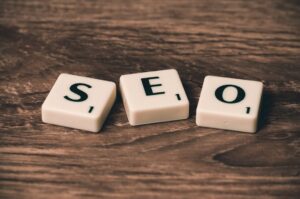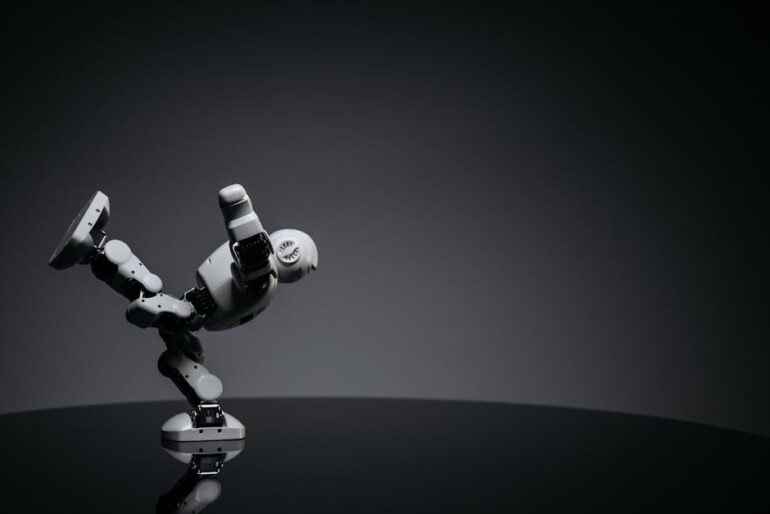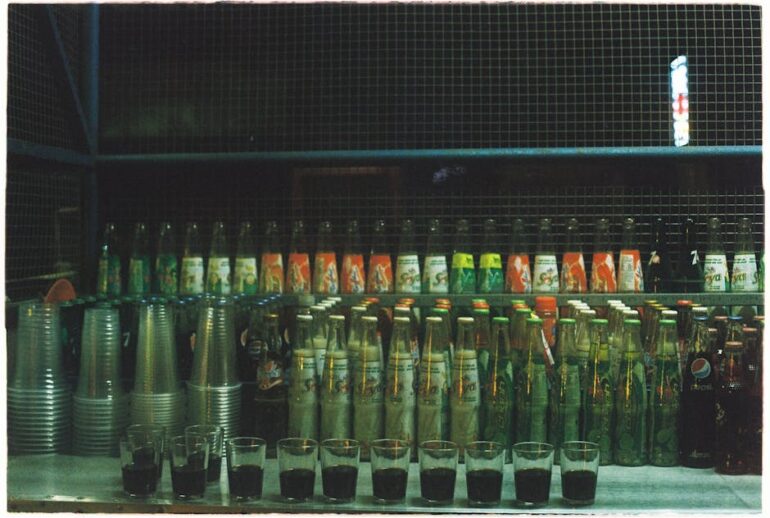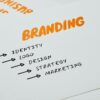So, it’s 2025. You’re probably thinking, “Display ads? Are those still a thing for B2B?” And honestly, that’s a fair question. Most people kinda picture those annoying pop-ups or banner ads for like, cheap shoes or something. But when we’re talking about B2B, it’s a whole different ballgame. It really is. Like, way different from the consumer stuff.
I mean, if you’re trying to sell complex software to a Fortune 500 company, just slapping up a random ad for “50% off” isn’t going to cut it. Not at all. B2B buying cycles are long, they’re complicated, and a bunch of people usually have to sign off on stuff. So, yeah, B2B display advertising in 2025, it’s still around, and it’s actually getting pretty cool, way smarter than it used to be. My take on this is if you don’t use them right, you’re missing out.
Why Display Ads Aren’t Dead for Businesses
Remember back in the day, everyone was all about organic reach or direct sales calls? While those are still good, the world just got louder. People – even business people – are scrolling, browsing, watching videos. They’re on LinkedIn, but also on news sites, maybe a specialized industry forum, or even just checking sports scores. Being visible in those places, but in a smart way, matters.
One thing I’ve noticed is that B2B buyers, they do a ton of research before they even talk to a salesperson. Seriously, like, most of the buying journey happens before your sales team even knows they exist. Display ads, if done right, can put your company in front of these folks way early, almost like planting a seed. They might not click right away, but they see your name, they see your logo, and maybe a little message that hits home. That builds some recognition.
You know, it’s like if you’re trying to pick a new phone. You don’t just buy the first one you see. You probably see ads for different brands over time, maybe read some reviews, ask your friends. It’s kinda the same in B2B, but with way bigger stakes. So, those display ads, they help with that early ‘getting to know you’ phase.
Targeting Smarter, Not Just Wider
This is where B2B display ads really changed. Forget spraying and praying. That’s just wasting money. In 2025, it’s all about getting super specific.
Using Fancy Data to Find the Right People
Back in the day, people thought about demographics, right? Like, “Oh, I want to reach men, 35-50, in cities.” For B2B, that’s basically useless. We’re talking about reaching companies and specific roles within those companies.
Firmographics: Think of it like demographics for businesses. What industry are they in? How big are they? Where are they located? What’s their revenue? This stuff helps narrow things down a lot. A software company selling to healthcare providers isn’t going to waste money advertising to construction firms. Makes sense, right?
Intent Data: This is a big one. It’s basically knowing when a company or a person at that company is actively looking for what you sell. How do you know? Well, they might be searching specific keywords, downloading whitepapers about a problem you solve, or visiting certain product review sites. There are platforms that collect this kind of data, and if you can tap into it, it’s like magic. You’re not guessing; you’re showing an ad to someone who’s already raising their hand, just not to you yet.
Account-Based Marketing (ABM): This is pretty cool. Instead of casting a wide net, you pick out specific companies you really want to work with. Maybe it’s your top 50 dream clients. Then you tailor everything – including your display ads – specifically for them. It’s like sending a personalized postcard instead of a mass flyer. Your display ads can show up on sites those specific individuals from those specific companies visit. It’s almost creepy how targeted it can get, but it works.
Retargeting (But Make It B2B): So, someone visited your website, maybe checked out a product page or downloaded an e-book. They didn’t convert, but they showed interest. With retargeting, you can keep your company in front of them with follow-up ads. “Hey, remember us? Here’s that thing you looked at, but with a new twist.” It’s a good way to keep the conversation going, even if they haven’t spoken to you yet.
The Cookie Crunch and What’s Next
Okay, so everyone’s been freaking out about third-party cookies going away. And yeah, it’s a big deal. But it doesn’t mean display ads are over. It just means advertisers have to be smarter. We’re seeing more reliance on things like first-party data (data you collect from your own website visitors or CRM), contextual advertising (ads based on the content of the page, not the user), and those fancy privacy-safe IDs. So, it’s not a dead end, just a new path to figure out. I think it will push everyone to be more creative.
Making Ads People Actually Want to Look At
This is probably the hardest part for some folks. Just because you can target someone perfectly doesn’t mean they’ll care about your ad.
Beyond Static Banners
A simple static banner ad with text and a logo? Yeah, sometimes it works for brand recognition. But there are so many other options now:
Video Ads: Short, punchy videos that play automatically (sometimes without sound) can grab attention. A quick explainer of a complex product, or a testimonial. People watch a lot of video these days.
Interactive Ads: Imagine an ad where someone can click a few buttons, maybe answer a quick poll, or even play a tiny game right within the ad unit. It’s way more engaging than just a flat image.
Dynamic Creative: This is pretty neat. The ad changes based on who’s seeing it. Like, if someone from a manufacturing company is looking at your software, the ad might show examples or benefits specific to manufacturing. If someone from a healthcare firm sees it, boom, it changes for them. It makes the ad feel much more personal.
Audio Ads (Yes, for B2B): People listen to podcasts and online radio while working, right? Display ads can extend to audio platforms too. A short, well-produced audio ad can reach people when their eyes are busy.
What’s interesting is that you really gotta think about where your audience hangs out. Are they on industry news sites, or are they more on professional social media? The type of ad, like video versus a detailed graphic, might depend on the platform. And always, always, test different versions. You never know what’s going to click (pun intended) until you try it.
Measuring What Actually Matters
Clicks are fine, but in B2B, a click isn’t always the end goal. What you really want is a lead, or better yet, a sale.
Looking Beyond the Click
Impressions and Reach: How many people saw your ad? Is it the right kind of people (aka, your target accounts)?
Website Visits and Time On Site: Did people who saw your ad then come to your site? And once they got there, did they hang around, or bounce right off? This can tell you if your ad messaging is actually relevant.
Conversions (Downloads, Demo Requests, Sign-ups): This is the gold standard. Did they do what you wanted them to do? Download a whitepaper? Fill out a form for a demo?
View-Through Conversions: This is a tricky one, but super important for B2B display. Someone sees your ad, doesn’t click it, but later, maybe days later, they come to your site directly or through a search and convert. The ad still played a part in getting them there, even without a direct click. It kinda helps build that mental link. My feeling is this often gets overlooked, but it’s real.
Brand Lift: This is harder to measure but still important. Are more people recognizing your brand after seeing your ads? Are they searching for your company name directly? Sometimes you have to do surveys or look at direct search volume for your brand.
Basically, you gotta connect your display ad efforts to your overall business goals. If you’re running ads just to say you’re running ads, what’s the point?
Putting It All Together: A Few Thoughts
Running B2B display ads in 2025 isn’t just about dumping money into a platform and hoping for the best. It’s about being smart, being targeted, and being creative. It’s about using data to find the right people at the right time, with the right message.
And, and this is kind of a big deal, you can’t just run display ads in a vacuum. They work way better when they’re part of a bigger marketing plan. Think about it: if someone sees your display ad, then maybe they see an ad on LinkedIn, then they get an email, then they search for you and find your blog. It’s all part of the journey. Display ads are like a little friendly hello along that path. They’re not the whole conversation, but they can kick it off or keep it going.
One little tip, don’t try to be too salesy in every single ad. Sometimes, an ad that just provides value, like a free resource or a useful stat, can actually work better than one screaming “BUY NOW!” It builds trust, which is something you really want in B2B.
Quick Questions People Ask About B2B Display Ads in 2025
1. Are B2B display ads too expensive for small businesses?
Not necessarily. While big companies can spend a lot, smaller businesses can start with very targeted campaigns using those firmographics and intent data we talked about. The idea is to spend less but be way more precise. You don’t need to reach everyone, just the right few.
2. How do B2B display ads work with privacy changes, like the end of third-party cookies?
It means leaning more on first-party data, which is data you collect yourself from your website or CRM. Also, things like contextual targeting (ads based on page content) and identity solutions that don’t rely on third-party cookies are getting much more common. It’s a shift, but not an end.
3. What’s the biggest mistake companies make with B2B display ads?
Probably not being specific enough with their targeting or having really boring, generic creative. If your ad looks like it could be for anyone, it’s going to resonate with no one. Also, not testing different ad variations is a big miss.
4. Can B2B display ads actually generate leads directly?
Absolutely! While often they’re more about awareness and nurturing, with strong calls to action (like “Download Our Guide” or “Request a Demo”) and great landing pages, they can definitely bring in direct leads. The key is that the offer needs to be genuinely appealing to a business buyer.
5. How long does it take to see results from B2B display campaigns?
It varies a lot. For brand awareness, you might see impressions and website visits go up fairly quickly. For direct leads or sales, it can take longer because B2B buying cycles are, like, super long. Sometimes it’s weeks or even months. You gotta be patient and keep optimizing.
So, yeah, B2B display ads in 2025? They’re not going anywhere. They’re just growing up and getting a whole lot smarter.

















